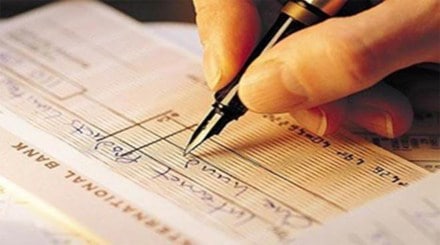Signing a cheque? It is important to be cautious before doing it due to the legal and financial implications involved. A signature on a cheque signifies authorisation for the mentioned payment, making it a powerful financial instrument.
You must know the recipient and the purpose before signing a cheque. A signed cheque can be misused or filled in for unintended transactions, causing financial losses and disputes. These small tips can reduce the risk of falling victim to fraud or legal troubles.
Adhil Shetty, CEO, Bankbazaar.com says, “By signing a cheque, you become legally obligated to honour the payment. Any discrepancies or lack of funds can lead to bounced cheques, causing damage to your credit score, and legal consequences.”
Here are some reasons why you must exercise caution:
Ensure Sufficient Funds
It is very critical to ensure that you have sufficient funds in your account to cover the amount of the cheque. Maintaining sufficient funds before issuing a cheque in India is of paramount importance to uphold financial credibility and avoid legal consequences.
When a person issues a cheque without adequate funds in their bank account, it results in a bounced or dishonoured cheque. Such a situation can lead to legal repercussions.
Also Read: How to save for your child’s education? Here are 5 tips for parents
Write Date Correctly
Make sure that the date on the cheque is correct and matches the day you are issuing it. It is essential for various reasons. Firstly, it ensures clarity and avoids confusion about when the cheque becomes valid for encashment. Incorrect dates might lead to delays or rejection by the recipient’s bank. Secondly, a proper date is crucial for maintaining accurate financial records and reconciliation of transactions.
Lastly, adhering to correct date writing demonstrates professionalism and attention to detail, enhancing the credibility and trustworthiness of the issuer in financial matters. Writing the date accurately is a simple yet significant step in ensuring smooth and hassle-free cheque transactions.
Name on Cheque
Write the name of the person or business you are issuing the cheque to clearly and accurately. A correctly written name ensures that the cheque reaches the intended recipient, avoiding any misdirection or confusion. Mistakes in name writing can lead to delays in clearing the cheque or even rejection by the bank.
Double-Check the Amount
Remember to check the amount you are writing on the cheque to avoid any discrepancies. By verifying the amount before issuing the cheque, you can ensure that the intended payment is accurate and aligns with the agreement. Moreover, in case of a fraudulent alteration, careful scrutiny can help detect any unauthorised changes. Being vigilant about the amount on the cheque showcases financial prudence and responsibility, instilling confidence in the recipient and reinforcing the integrity of the transaction.
Use Permanent Ink
Use permanent ink to avoid the cheque being tampered with.
It is essential to prevent alterations and fraud. Permanent ink makes it difficult to modify the cheque’s details after it has been issued. It ensures the integrity of the information provided, reducing the risk of unauthorised changes to the cheque amount, payee name, or date.
Sign the cheque
Sign the cheque in the designated area using your full name. Make sure that your signature matches the same signature as you have given in the bank. In case of mismatch the bank is likely to reject your cheque and it may waste your time and the payment might get delayed.
Keep Cheque Number
Keep track of the cheque number and make a note of it in your records. It is important to ensure that you write it down somewhere at a safe place. Whenever there is a dispute, you can always use this cheque number to clear doubts or give it to the bank for verification.
Avoid Post-dating
Avoid post-dating the cheque as it may not be honoured by the bank. Date plays a key role in helping the bank to honour the cheque. You can put the date when you want the funds to get deducted from your account. If you put a wrong date, month or year, your cheque is most likely to get returned.
Never Issue a Blank Cheque
Never issue a blank cheque as it can be filled in with any amount.
Shetty explains, “This can be extremely risky. A blank cheque leaves the crucial financial instrument open to misuse and fraud, as anyone in possession can fill in the details, including the amount and payee. This lack of control exposes the issuer to potential financial losses and legal liabilities. Blank cheques can be misused for unauthorised withdrawals or transactions. To safeguard against fraud and maintain financial security, it is crucial never to issue or sign blank cheques. Always fill in the cheque details accurately and ensure that it is issued only to trusted recipients.”
Safety and Security
Keep the chequebook in a safe and secure place to prevent it from getting lost or stolen. Your cheque without your signature has no relevance. But you must not let this instrument handle carelessly. All your banking documents and instruments must be kept safely.
Hope these tips will help you make you aware about the right cheque writing practices.
